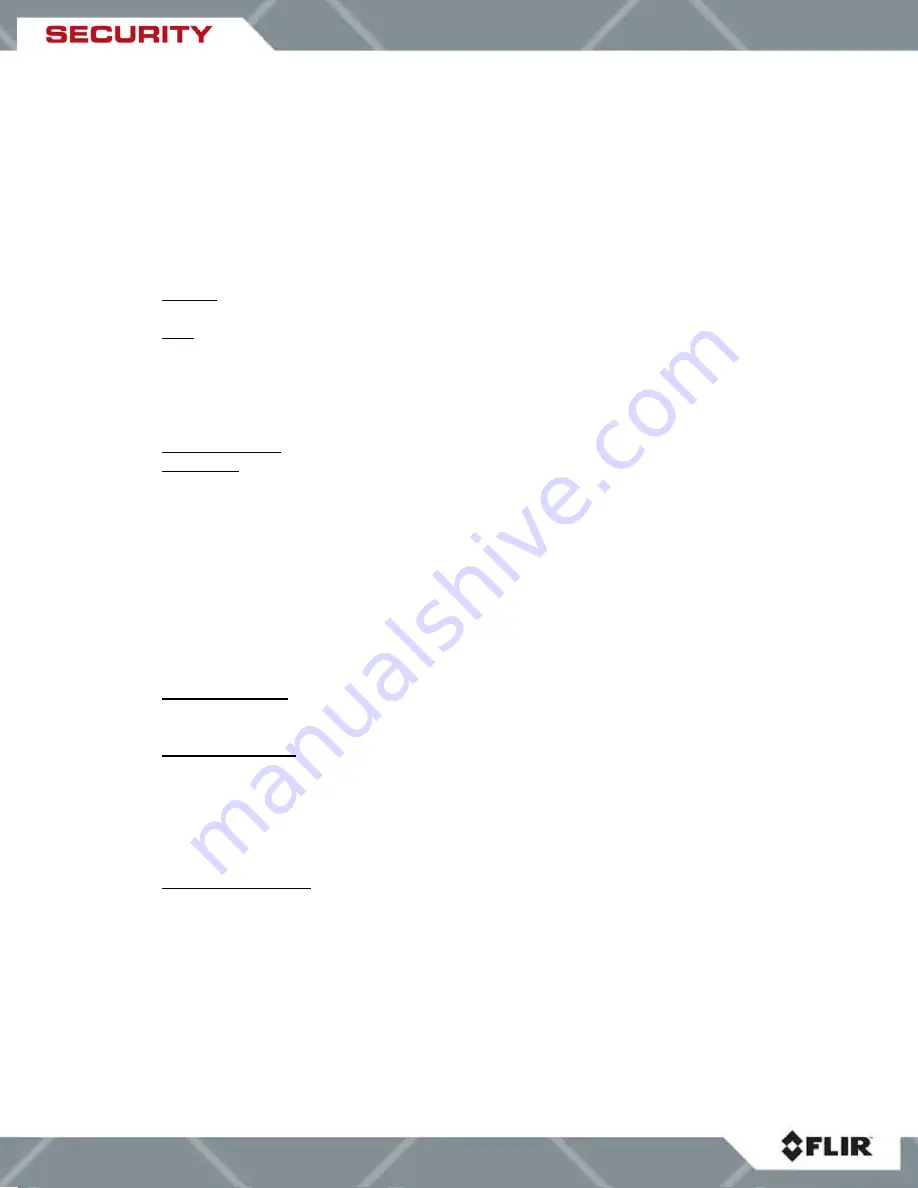
427-0016-00-10 Revision 120
Copyright © 2008 FLIR Systems, Inc. 14
Infrared Panel
The Infrared panel contains the
Video and AGC
tab and a
General
tab, shown
in Figure 10 and Figure 11. These tabs provide the ability to control the infrared camera from the
PC. The
Video and AGC
tab provides for basic image optimization along with camera control. The
General
tab allows for further camera control to set power-on defaults and get further camera data.
The infrared camera commands for the PTZ-35 MS / PTZ-50 MS software interface are listed in
section 9.0 Software Control Functions.
Video and AGC:
provides infrared camera video and AGC settings
1. Polarity. Imagery can be displayed in either white-hot (hotter objects appear brighter than
cooler objects) or black-hot (hotter objects appear darker than cooler objects.
2. FFC. The infrared camera includes an internal shutter for periodically improving image
quality via a process called “flat-field correction” (FFC). During an FFC, a small calibration
flag rotates in front of the detector array, presenting a uniform temperature (i.e. a “flat field”)
to every detector element. Auto mode performs the FFC based on a change in ambient
temperature and Manual mode only performs the FFC when input by the user. Both modes
allows for an instantaneous FCC by depressing the “Do FFC” button.
3. Electronic Zoom. The camera will perform a 2X zoom controlled by the user.
4. AGC Type. The image can be optimized using an Automatic Gain Control or AGC type
algorithm. The three AGC types available are Plateau Equalization, Linear Histogram and
Logarithmic. Definitions for each are described below.
a. Plateau Equalization: The plateau equalization uses a histogram equalization
algorithm (HEQ) to analyze the scene content in real time and redistributes the
dynamic range of the scene.
b. AutoBright: The auto bright algorithm allows for the contrast and brightness bias to
be set while maintaining the offset automatically.
c. Linear Histogram: The linear histogram algorithm uses scene statistics to set a
global linear gain and offset (contrast and brightness) for the image.
d. Manual: The manual setting allows for user control for contrast (gain) and brightness
(offset) for the image.
5. AGC Parameters. The image can be further optimized using the AGC Parameters to control
the Plateau Value, Mid ITT Offset and Max Gain. All of these terms allow the user to
optimize the image based on the scene content.
6. Region Of Interest. The Region Of Interest or ROI determines what portion of the screen
will be used for the AGC calculations. The Full Screen option applies the AGC algorithm
based on scene content on the full screen. The Horizon Optimized applies horizontally
across the screen but uses only the middle third in the vertical direction. The Sky Optimized
applies horizontally across the screen but only the top half in the vertical direction. The
Ground Optimized applies horizontally across the screen but on the lower half in the vertical
direction. The other modes are applied using the center of the screen as 0, 0.
7. Detail Enhancement. This option applies a Bi-Lateral filter to enhance the image. The
default values are 16, 24, 32, 64, 96 and 128.





























